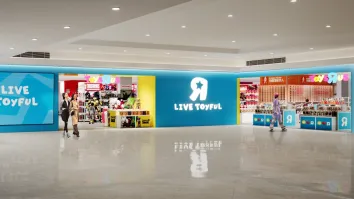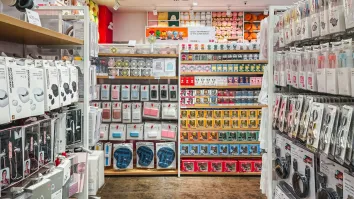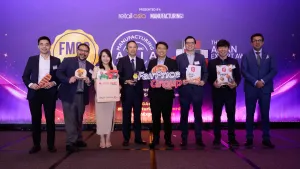
RSM's David Eu offers insights on e-commerce, technology, and collaborative innovation driving retail transformation
He stressed that personalisation, engagement, and community-building are amongst those that foster long-term consumer loyalty.
The retail landscape in Asia stands at the edge of transformation, propelled by the dynamic interplay of technological advancements, shifting consumer preferences, and evolving market dynamics. As the region witnesses unprecedented growth in e-commerce, alongside the enduring appeal of traditional brick-and-mortar establishments, industry leaders are tasked with navigating a complex terrain of challenges and opportunities.
David Eu, Partner & Industry Lead for F&B, Retail and Consumer Products at RSM Singapore, brings to the forefront a wealth of experience and expertise in navigating the intricacies of the retail sector. With a distinguished career spanning over three decades, David has been instrumental in guiding F&B, retail, and consumer product enterprises towards sustainable growth and operational excellence.
A seasoned professional, David has a background rooted in assurance. His portfolio encompasses a spectrum of clientele, ranging from manufacturing and trading companies to public-listed entities in the industrial and retail domains. His extensive experience, spanning both corporate finance and audit realms, underscores his holistic understanding of the retail landscape.
As a judge at the Retail Asia Awards 2024, David shares invaluable insights into the evolving dynamics of the retail sector, delving into strategies for harnessing the power of e-commerce, the transformative potential of emerging technologies, and the imperative of fostering collaborative ecosystems for innovation.
With a keen eye on driving sustainable growth and fostering enduring consumer loyalty, David’s perspectives offer a compelling roadmap for retailers navigating the intricacies of an ever-evolving marketplace.
E-commerce is rapidly growing. With the challenges traditional retailers face when integrating e-commerce into their business models, what strategies can they employ to overcome these challenges effectively?
In the face of the rapidly growing e-commerce landscape, traditional retailers looking to integrate e-commerce into their business models can explore the use of strategic approaches to effectively overcome associated challenges.
One key strategy involves differentiating their value proposition by placing an emphasis on human touch and personalised services instead. This approach would include offering consumers product recommendations and tailored suggestions based on their purchase history. Additionally, active engagement through social media, email marketing, and the establishment of loyalty programs can play pivotal roles in building a deeper connection with customers.
Next, retailers can benefit from establishing an omnichannel presence and harnessing connectivity through technology. Established brands with physical stores and a loyal customer base can tap on these strengths and leverage technology to create a seamless experience across online and offline channels by offering in-store pickup and returns, personalised recommendations, and exclusive online deals. Additionally, embracing the use of data analytics can enhance the online shopping experience for consumers. For instance, by collecting sales and customer preference data, businesses would be able to identify purchase patterns to optimise product offerings. Recognising the interplay between online and offline consumer behaviours is also crucial.
Potential online shoppers often prefer visiting physical stores before making a purchase decision. Conversely, in-store customers often rely on online resources such as reviews and competitor pricing for informed decision-making. Retailers must diligently work towards ensuring a consistently positive experience across both online and offline platforms, bridging the gap and maintaining a harmonious customer journey.
Lastly, retailers are advised to start small before scaling up in the e-commerce space. This involves differentiating product offerings across various platforms, ensuring that each channel provides a unique and tailored selection. Efficient management of product offerings becomes essential in this phase, requiring careful attention to inventory, pricing, and overall presentation. Traditional retailers should be proactive in assessing the effectiveness of their approach and making timely adjustments when necessary.
With the continued evolution of technology, how do you foresee emerging technologies shaping the future of the retail experience, and what opportunities do they present for retailers?
The future of emerging technologies will certainly redefine the shopping experience for consumers. Immersive technologies such as augmented reality (AR) and virtual reality (VR) will create a more personalised and engaging buyer experience, effectively blurring the lines between online and offline market spaces. These technologies would also offer tremendous advantages for retailers to be able to collect and analyse huge amounts of customer data. The advances in data analytics, AI and machine learning, allow them to meet the growing expectations of customers by tailoring their offerings to unique preferences and needs.
With AI-powered algorithms, retailers would be able to analyse customer data to personalise everything from product recommendations to items displayed in-store, creating a seamless and highly relevant shopping experience.
Additionally, emerging technologies are set to revolutionise retail operations. As robotic process automation becomes more prevalent, robots can handle repetitive tasks like inventory management, supply planning, and return processing. This will free up employees for higher-value tasks like personalised interactions and customer service. Smart stores equipped with embedded sensors will actively track customer behaviour, product movement, and environmental conditions. The data generated by these sensors becomes instrumental in optimising store layout, restocking procedures, and adjusting lighting and temperature based on real-time customer preferences.
The integration of AI-enabled cameras, RFID strips, and mobile apps will streamline the shopping process, allowing customers to shop, pick up their items, and leave without traditional checkout processes.
For retailers, the integration of emerging technologies brings forth a spectrum of opportunities. To remain competitive, they need to be early adopters of cutting-edge tools to attract tech-savvy customers. As mentioned earlier, there is a clear shift in focus to personalisation, seamless online-to-offline integration, data analytics, and smart store capabilities. By embracing these elements, retailers can create personalised experiences that not only increase customer engagement but also foster sales growth and cultivate a more loyal customer base. Personalised experiences will increase customer engagement and lead to increased sales and more loyal customers. The power of data-driven insights becomes evident in optimising operations, reducing costs, and enhancing decision-making processes.
Retailers need to create a unified platform with technology and data and foster successful partnerships with digital collaborators. Great customer service remains crucial to the retail experience; hence, technology should complement and enhance the roles of employees, not replace them.
How can retailers effectively enhance consumer engagement and build long-term loyalty, especially considering the evolving expectations of consumers?
To effectively enhance consumer engagement and cultivate long-term loyalty, retailers can implement a multifaceted approach.
Firstly, retailers can build deeper connections through personalisation with smart technology. Retailers can leverage customer data (with consent) to tailor interactions. This involves suggesting relevant products, offering targeted promotions, and delivering content that aligns with individual preferences. Creating a seamless omni-channel experience is vital, allowing customers to effortlessly switch between online browsing, in-store shopping, and mobile app interactions. Additionally, micro-targeting, achieved by segmenting the audience based on shared interests, behaviours, and demographics, enables more relevant communication and promotions, fostering a sense of connection.
Next, engaging experiences contribute significantly to consumer loyalty. Retailers can employ interactive features such as live chat, virtual try-on tools, and personalised quizzes to keep customers actively engaged. Establishing online or offline communities where customers can connect, share ideas, and offer each other support helps build brand loyalty and advocacy. Hosting exclusive events and experiences, workshops, or product demonstrations for loyal customers adds value by making them feel appreciated and creating lasting memories.
Offering value beyond products is crucial. To foster a sense of connection and shared values, align the brand with a social or environmental cause that resonates with your target audience to create a purpose-driven brand. Train your staff to provide exceptional customer service, resolving issues promptly and exceeding expectations which will build trust and create positive associations with your brand. Implementing reward programmes with tiered benefits incentivises repeat purchases and sustains customer engagement.
Lastly, retailers have to focus on remaining relevant. By embracing technology such as AI and analytics they will be able to better understand customer behaviour, predict trends, and personalise offerings. Transparency and authenticity are key in communication, involving open and honest dialogue, admitting mistakes, and actively addressing feedback.
By incorporating these strategies, retailers can effectively navigate evolving consumer expectations and build continued loyalty.
How can retailers innovate their supply chain management processes to enhance efficiency, reduce costs, and ensure a seamless end-to-end experience for consumers?
Key areas where retailers can focus their innovation efforts would be to:
- Embrace automation and technology:
Retailers can invest in warehouse automation. Smart warehouses equipped with robots, drones, and automated guided vehicles for tasks like picking, packing and sorting, significantly reduce labour costs and improve accuracy and speed. Real-time inventory tracking also provides visibility of inventory levels across all channels in real-time, enabling better forecasting and reducing stockouts.
Implement data-driven decision-making to reduce costs in supply chain management:
By leveraging machine learning to predict future demand with greater accuracy, retailers will be able to make informed decisions on production schedules, inventory levels, and pricing strategies. Utilisation of blockchain technology will help create a secure and transparent record of transactions which improves traceability and prevents fraud. Moreover, customer service and satisfaction would be improved when products are available in the right place at the right time.
- Focus on sustainability and ethical sourcing:
Retailers can implement initiatives like trade-in programmes and recycling to reduce waste and promote resource efficiency. This not only aligns with environmental concerns but also enhances the brand image through a commitment to responsible practices.
- Personalise delivery experience:
Real-time delivery tracking allows customers to track their deliverables in real time, providing status updates for increased transparency. Additionally, the implementation of contactless delivery options, such as smart lockers, ensures both safety and convenience for customers, contributing to an overall seamless and positive end-to-end experience in the retail supply chain.
Collaboration is increasingly important in the modern retail ecosystem. How can retailers foster meaningful collaborations with stakeholders to drive innovation and address industry challenges collaboratively?
When it comes to fostering meaningful collaborations to drive innovation and address challenges, I would recommend retailers carry out the following strategies:
- Identifying and engaging stakeholders:
Retailers should map their ecosystem, defining stakeholders ranging from suppliers and manufacturers to employees and community members. Aim to go beyond the usual suspects, don't limit yourself to traditional partners. Explore collaborations with start-ups, universities, NGOs, and even competitors for fresh perspectives and diverse expertise. Businesses can foster open communication channels and share relevant information to build trust and a sense of shared ownership.
Designing collaborative initiatives:
Align your collaborations with specific challenges or opportunities, ensuring mutual benefit and value creation for all stakeholders. Aligning collaborations with specific challenges or opportunities ensures mutual benefit, and forming cross-functional teams with representatives from different stakeholder groups benefits from diverse expertise. Retailers must embrace flexible structures, utilise agile methodologies, and adopt iterative approaches that encourage experimentation and learning.
- Enabling collaboration:
This involves investing in technology for seamless communication, data sharing, and project management. Promoting a collaborative culture within the organisation and across stakeholder groups is key, emphasising open communication, knowledge sharing, and risk-taking. Recognising and rewarding successful collaborations helps build momentum and motivates continued engagement.
By proactively fostering meaningful collaborations with stakeholders, retailers will then be able to enjoy benefits such as:
- Enhanced innovation: Diverse perspectives and expertise lead to more creative solutions and faster problem-solving.
- Improved efficiency and cost reduction: Collaborations can help streamline processes, optimise supply chains, and share resources.
- Strengthened brand reputation: Working with stakeholders on shared goals can build trust and goodwill amongst customers and communities.
- Increased market agility: Collaborative approaches allow retailers to adapt quickly to changing market trends and consumer demands.
As a returning judge at the Retail Asia Awards, could you elaborate on the specific criteria you consider most crucial when assessing companies and their initiatives?
My evaluation of companies and their initiatives will be based on:
- The tangible results or positive impact the initiative has on the business, industry and/or customers.
- The effectiveness of the project’s implementation. This involves an examination of whether the key objectives were successfully achieved and how the initiative navigated any unforeseen challenges that may have arisen during its execution.
- An assessment of factors like omnichannel integration, employee engagement, customer experience, and brand image.
- Measurable achievements in terms of its growth and market share improvement.
- Evaluation of the overall presentation and alignment with the category criteria.



















 Advertise
Advertise








